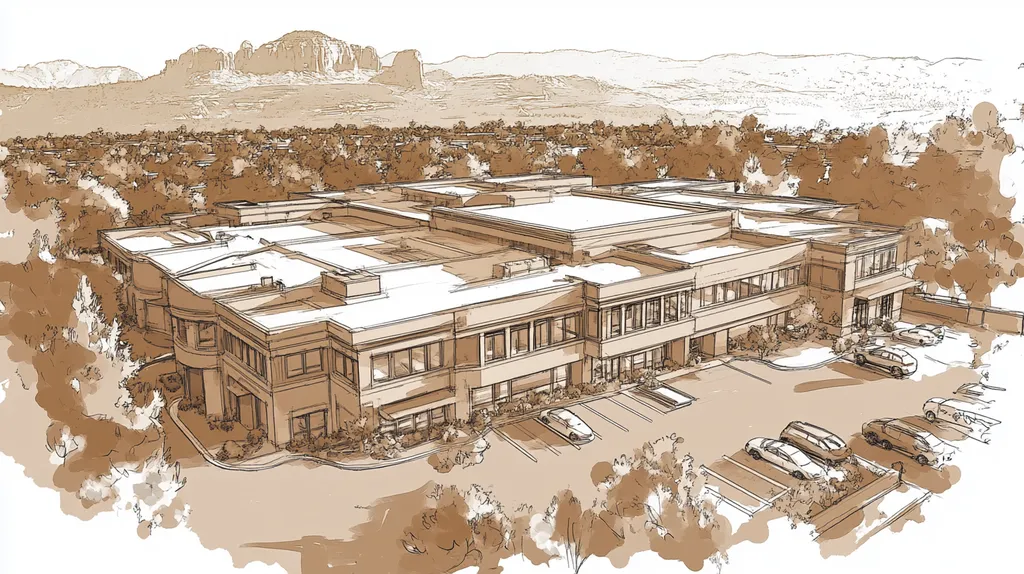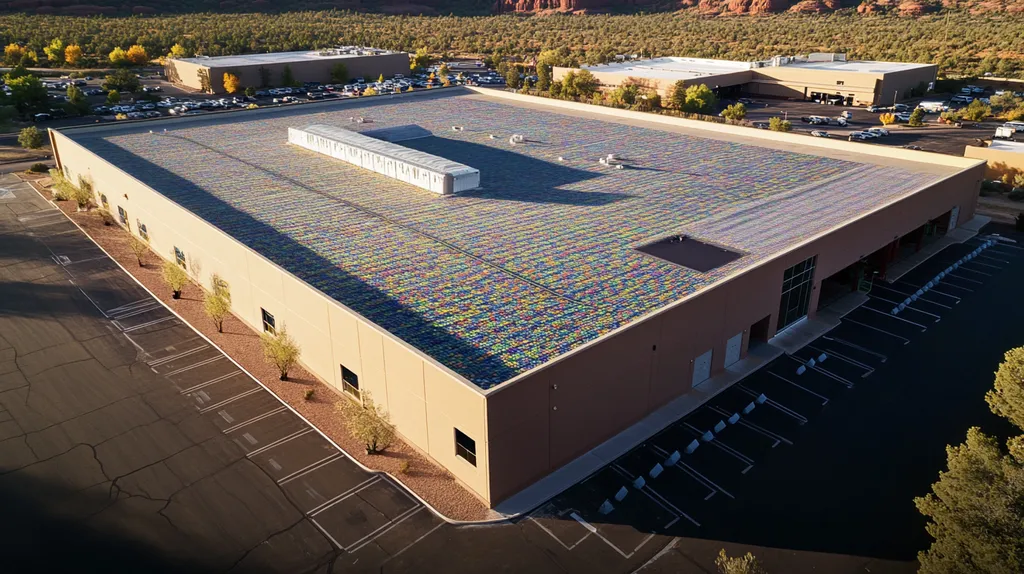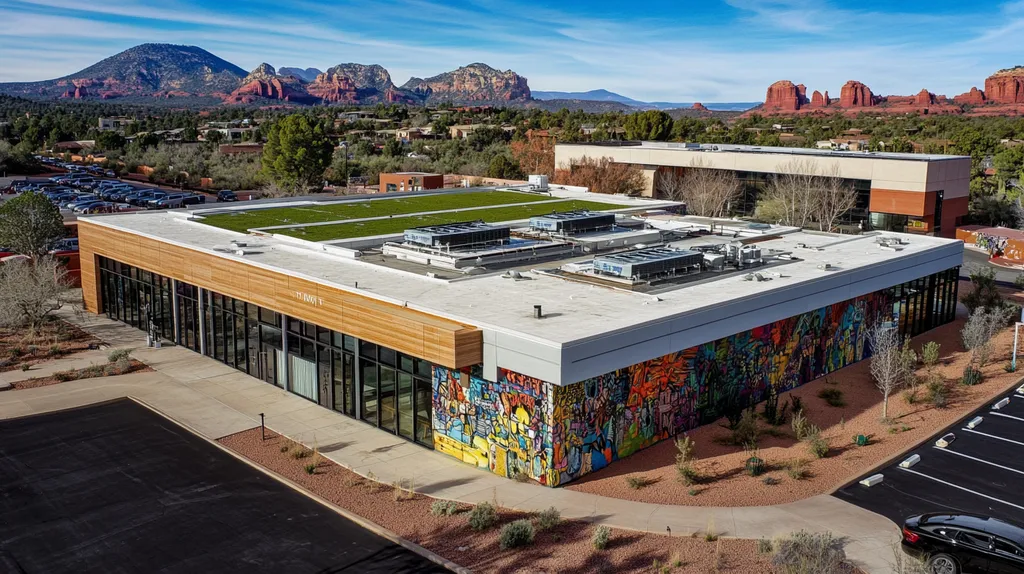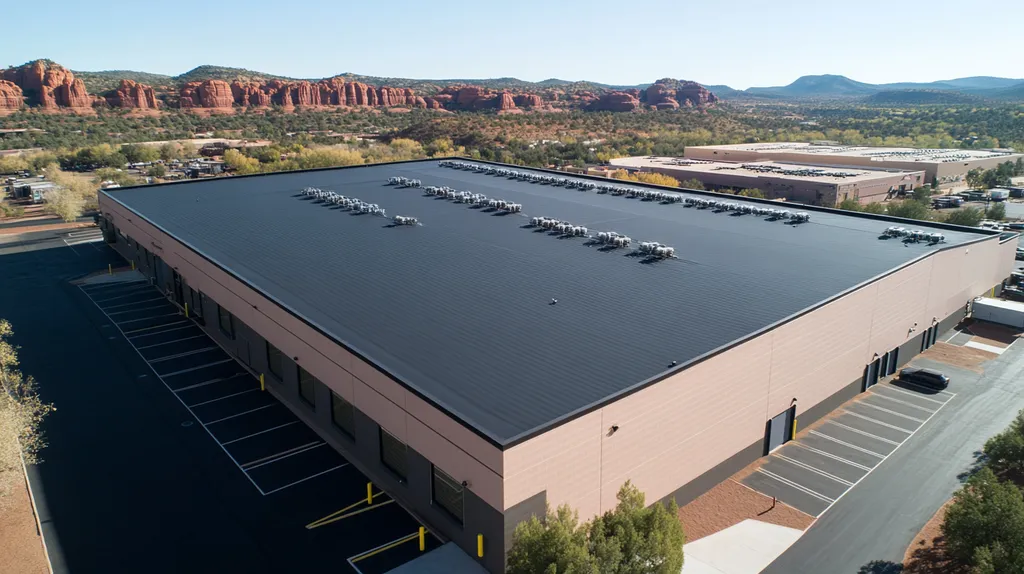Welcome to today’s Battle Royale featuring two roofing heavyweights: “PVC Scuppers” in the east corner versus “Metal Scuppers” in the west!
Tonight’s showdown pits these contenders against each other across six punishing rounds designed to test every aspect of their performance for Commercial Roof Installation.
At stake? Millions in potential costs, decades of building protection, and the critical performance demands of modern commercial and industrial facilities.
Our professional judging panel will evaluate each round on technical merit, real-world performance, and value delivery. After all six rounds, we’ll declare our ultimate champion.
Ladies and gentlemen, facility managers and building owners… it’s time to rumble!
ROUND 1: INITIAL COSTS & INSTALLATION
In commercial roofing, scupper selection can make or break your drainage system – and your budget. Every millimeter of water weighs 2.2 pounds per square foot, making proper drainage critical for structural integrity. The choice between PVC and metal scuppers impacts not just installation costs, but also project timelines and long-term performance.
Material Expenses
Scuppers serve as crucial outlets through parapet walls and gravel stops, directing water flow to protect your roof’s integrity. When properly spaced at maximum 10-foot intervals, they form a critical component of your drainage system. (source: Copper.org)
PVC scuppers typically cost 30-40% less than their metal counterparts upfront. Their lightweight nature also reduces shipping costs and makes them easier to handle on-site.
Metal scuppers, while commanding a higher initial investment, offer superior durability and weather resistance. Their robust construction helps prevent warping and UV degradation common in plastic alternatives.
Metal scuppers earn an “ADVANTAGE” here due to their superior longevity and value retention.
Installation Complexity
PVC installations require minimal specialized tools and can often be completed with standard roofing equipment. Their lightweight nature reduces worker fatigue and allows for faster positioning.
The flexibility of PVC materials enables easier fitting around irregular surfaces and quick adaptation to existing structures. This adaptability significantly reduces installation time and potential complications.
Metal scuppers demand precise cutting and fitting, often requiring specialized metalworking tools and skills. Their weight makes positioning more challenging, especially on higher structures.
PVC claims the clear “ADVANTAGE” for installation simplicity and reduced labor requirements.
Project Timeline
PVC scupper installations typically complete 40% faster than metal alternatives. Their simplified installation process reduces the risk of weather-related delays and minimizes business disruption.
The quick-connect nature of PVC systems allows for rapid deployment across large roof areas. This speed advantage becomes particularly crucial during emergency repairs or time-sensitive projects.
Metal installations require additional time for precise measurements, custom fitting, and proper sealing. While this attention to detail enhances longevity, it extends project timelines significantly.
PVC takes the “ADVANTAGE” for faster completion times and reduced project duration.
ROUND 1 WINNER: PVC Scuppers
ROUND 2: DURABILITY & LIFESPAN
When water weighs 2.2 pounds per square foot, selecting the wrong scupper material can turn your roof into an expensive swimming pool. Every rainstorm becomes a stress test, and every freeze-thaw cycle threatens to compromise your drainage system. Understanding how different scupper materials weather these challenges can mean the difference between a 20-year roof life and a 5-year money pit.
Material Resistance to Weathering
Mother Nature throws everything she’s got at commercial roofs: acid rain, ice storms, and temperature swings that would make a rollercoaster jealous. Your scuppers need to handle it all without flinching.
PVC scuppers shrug off most weather challenges like a duck sheds water. Their chemical composition resists corrosion, and they maintain flexibility even in extreme temperatures. However, they can become brittle if not properly UV-stabilized.
Metal scuppers initially seem bulletproof but can develop serious attitude problems over time. Galvanic corrosion turns tough guys into rust buckets, especially where different metals meet. Conductor heads should extend at least 2 inches wider than the scupper opening, with proper flashing extending 4 inches onto the roof. (source: Copper.org)
Metal scuppers claim the “ADVANTAGE” here due to their proven track record in extreme conditions.
Impact Resistance
Commercial roofs take more hits than a boxing champion. From maintenance crews dropping tools to hailstorms treating your roof like a drum set, scuppers need to maintain their shape and function.
PVC scuppers can flex under impact without cracking, but repeated stress at the same point can lead to fatigue. Their lighter weight makes them more susceptible to damage from heavy impacts.
Metal scuppers laugh off most impacts that would dent or crack their plastic cousins. Their rigid construction maintains critical drainage dimensions even after taking serious punishment.
Metal takes the clear “ADVANTAGE” for standing up to physical abuse.
Temperature Performance
From scorching summer days to freezing winter nights, your drainage system needs to perform flawlessly across temperature extremes. Expansion and contraction cycles can destroy inferior materials.
PVC scuppers maintain consistent performance across a wide temperature range. Their natural flexibility allows them to expand and contract without compromising watertight seals.
Metal scuppers can warp or buckle under extreme temperature changes. Their rigid nature makes them more susceptible to seal failures where different materials meet.
PVC earns the “ADVANTAGE” for reliable performance across temperature extremes.
ROUND 2 WINNER: TIE
ROUND 3: PERFORMANCE FACTORS
When it comes to commercial roofing, performance isn’t just about keeping water out – it’s about preventing the $250,000 inventory loss that happens when a scupper fails during a midnight thunderstorm. Every square foot of ponding water adds 5.2 pounds of weight to your roof structure, turning minor drainage issues into major structural threats.
Drainage Efficiency
Scuppers serve as your roof’s emergency exits, and like any emergency system, they need to work flawlessly when called upon. Proper scupper placement and sizing can prevent catastrophic water accumulation during severe weather events.
PVC scuppers offer superior water flow characteristics thanks to their ultra-smooth interior surfaces. Their uniform construction eliminates the seams and joints that can trap debris and slow drainage.
Metal scuppers can be precisely engineered to handle specific flow rates, with conductor heads extending at least 2 inches wider than openings to maximize drainage capacity. Wood blocking under scuppers provides essential structural support for long-term performance. (source: Copper.org)
Both materials earn a “TIE” for drainage efficiency when properly installed.
Maintenance Requirements
Regular maintenance determines whether your scuppers last 5 years or 25 years. The wrong choice multiplies your maintenance costs faster than rabbits in springtime.
PVC scuppers resist organic growth and chemical degradation, requiring minimal cleaning beyond routine debris removal. Their smooth surfaces prevent material buildup that could restrict water flow.
Metal scuppers demand regular inspection for corrosion and seal integrity, especially at joints and transitions. Their textured surfaces can trap debris and require more frequent cleaning to maintain optimal performance.
PVC claims the clear “ADVANTAGE” for lower maintenance demands.
Cold Weather Performance
Winter weather transforms your drainage system into an ice sculpture contest nobody asked for. When temperatures plummet, your scupper choice becomes the difference between proper drainage and frozen waterfall formation.
PVC scuppers maintain flexibility in freezing conditions, reducing the risk of cracking during freeze-thaw cycles. Their thermal properties also help prevent ice damming at crucial drainage points.
Metal scuppers conduct cold efficiently, accelerating ice formation and increasing the risk of damage from expanding ice. Their rigid nature provides no flex when ice pressure builds up.
PVC takes the “ADVANTAGE” for superior cold-weather reliability.
ROUND 3 WINNER: PVC Scuppers
ROUND 4: MAINTENANCE REQUIREMENTS
Every dollar saved on maintenance today can cost ten dollars in emergency repairs tomorrow. When water infiltration compromises inventory or disrupts operations, the true cost of neglected scupper maintenance becomes painfully clear. Proper upkeep isn’t just about preserving materials – it’s about protecting your entire building investment from devastating water damage.
Regular Inspection Requirements
The installation of scuppers demands careful planning and ongoing monitoring to maintain optimal drainage. A properly assessed system considers roof slope, sizing requirements, and integration with existing drainage components to prevent costly failures. (source: Al Syed Construction)
PVC scuppers require quarterly visual inspections to check for UV damage, material fatigue, and debris accumulation. Their smooth surfaces make quick work of assessment, with most issues visible from ground level or roof edge.
Metal scuppers need monthly inspections during the first year to establish corrosion patterns and identify potential weak points. Their complex joints and seams demand closer scrutiny, often requiring roof access for proper evaluation.
PVC takes the “ADVANTAGE” for simpler inspection protocols.
Cleaning and Preventive Care
Debris removal and surface cleaning form the backbone of effective scupper maintenance. Neglected cleaning can transform minor blockages into major structural threats as water backs up behind clogged outlets.
PVC scuppers resist organic growth and chemical degradation, typically requiring only seasonal cleaning with standard tools. Their non-porous surfaces prevent material adhesion, making maintenance quick and straightforward.
Metal scuppers demand aggressive cleaning to prevent corrosion, especially in coastal environments. Their surfaces can trap debris in microscopic rust pits, requiring specialized cleaning agents and techniques.
PVC claims the clear “ADVANTAGE” for reduced cleaning requirements.
Repair and Replacement Cycles
Understanding repair cycles helps property managers budget effectively for drainage system maintenance. Unexpected failures can cascade into extensive damage, making predictable maintenance essential.
PVC scuppers occasionally need seam reinforcement or UV coating renewal but rarely require complete replacement. Their modular design allows for section-by-section repairs without disrupting the entire system.
Metal scuppers frequently need resealing at joints and may require partial replacement due to galvanic corrosion. Their repair process often involves hot work permits and specialized welding skills.
PVC secures the “ADVANTAGE” for more manageable repair cycles.
ROUND 4 WINNER: PVC Scuppers
ROUND 5: SUSTAINABILITY CREDENTIALS
In an era where environmental impact drives purchasing decisions, choosing between PVC and metal scuppers has implications far beyond your building’s drainage. With commercial buildings generating 30% of construction waste and sustainability regulations tightening yearly, today’s scupper choice impacts tomorrow’s environmental compliance.
Every pound of roofing material entering landfills costs both your budget and the planet. Smart material selection can slash your building’s environmental footprint while future-proofing against evolving green building codes.
Recyclability and Material Impact
PVC scuppers represent a recycling challenge, with only 3% currently diverted from landfills. Their petroleum-based composition makes them difficult to process, and many recycling facilities reject PVC roofing materials outright.
The manufacturing process for PVC releases volatile organic compounds (VOCs) and requires significant energy input. While some manufacturers offer take-back programs, these often prove impractical for most commercial properties.
Metal scuppers boast recycling rates above 95% and maintain their material value through multiple cycles. Their scrap value often offsets removal costs during replacement, creating a circular economy benefit.
Metal scuppers earn the clear “ADVANTAGE” for superior recyclability and reduced environmental impact.
Energy Efficiency in Production
PVC production requires intensive energy input, consuming roughly 11,500 BTUs per pound of material. The process generates significant greenhouse gas emissions and requires fossil fuel feedstock.
Transportation costs for PVC add to its carbon footprint, as petroleum-based materials become increasingly expensive to ship. The lightweight nature of PVC offers minimal offset to these environmental costs.
Metal scuppers require initial energy investment but offset this through durability and recyclability. Modern metal production increasingly utilizes renewable energy sources, reducing environmental impact.
Metal claims the “ADVANTAGE” for lower lifetime energy costs and improving production efficiency.
Long-Term Environmental Impact
PVC scuppers can leach chemicals into runoff water over time, particularly in areas with high UV exposure. Their degradation produces microplastic particles that enter waterways through roof drainage.
As materials age, PVC becomes increasingly difficult to recycle, often requiring disposal in specialized facilities. This end-of-life challenge compounds their environmental impact.
Metal scuppers weather naturally without releasing harmful compounds. Their durability reduces replacement frequency, minimizing waste generation and resource consumption.
Metal secures the “ADVANTAGE” for superior environmental performance over time.
ROUND 5 WINNER: METAL SCUPPERS
ROUND 6: SPECIALIZED APPLICATIONS
When water infiltrates through improper drainage, a 10,000-square-foot commercial roof can turn into a million-dollar disaster faster than you can say “insurance deductible.” Specialized applications demand drainage solutions that work flawlessly in challenging environments, from corrosive industrial zones to hurricane-prone coastal regions.
Modern commercial buildings face unprecedented challenges, with climate change intensifying weather patterns and environmental regulations tightening annually. Your scupper choice today determines whether your roof becomes a reliable shield or an expensive sieve.
Chemical Resistance Requirements
Industrial facilities, laboratories, and manufacturing plants create unique challenges for drainage systems. Exposure to harsh chemicals, industrial emissions, and process byproducts can rapidly degrade standard materials.
PVC scuppers excel in chemical environments, shrugging off acids, bases, and industrial solvents like a teenager ignores homework. Their non-reactive nature prevents degradation even in aggressive chemical atmospheres.
Metal scuppers face an uphill battle against chemical exposure. Even stainless steel variants can succumb to specific chemical combinations, leading to premature failure and costly replacements.
PVC claims the clear “ADVANTAGE” for chemical resistance capabilities.
High-Wind Performance
Scuppers in coastal regions and high-rise buildings must withstand wind forces that would make a tornado jealous. Proper sizing and secure anchoring become critical factors in preventing catastrophic failures during extreme weather events.
PVC scuppers can flex under wind loads but may suffer from uplift forces in severe conditions. Their lighter weight requires additional anchoring considerations to prevent displacement.
Metal scuppers provide superior wind resistance through sheer mass and rigid construction. Their robust nature maintains critical drainage paths even under extreme wind loads.
Metal takes the “ADVANTAGE” for superior wind resistance.
Specialized Industry Requirements
Different industries demand unique drainage solutions based on their specific operational challenges. From food processing facilities requiring sanitary designs to tech companies needing EMI-shielded components, one size definitely doesn’t fit all.
PVC scuppers offer excellent adaptability for specialized needs, with custom configurations available for unique applications. Their non-conductive nature makes them ideal for facilities with sensitive electronic equipment.
Metal scuppers struggle to meet certain industry-specific requirements, particularly in environments where conductivity or static discharge poses risks. Their standardized designs may not accommodate unique operational needs.
PVC earns the “ADVANTAGE” for meeting diverse industry requirements.
ROUND 6 WINNER: PVC Scuppers
AND THE WINNER IS…
Ladies and gentlemen, after six punishing rounds of technical warfare, we have our verdict! With victories in Rounds 1, 3, 4, and 6, your new Commercial Roofing Drainage Champion is… PVC SCUPPERS!
This lightweight contender dominated the scorecard with superior installation speed, lower maintenance demands, and exceptional performance in specialized applications. PVC’s chemical resistance and adaptability proved decisive advantages in modern commercial environments.
But don’t count metal scuppers out! Their commanding victory in Round 5’s sustainability battle and strong showing in durability proves they’re still the heavyweight champion for buildings facing extreme weather conditions or requiring maximum recyclability.
*Important Championship Committee Notice*
Every building presents unique challenges that can affect material performance. Local climate conditions, architectural specifications, and property-specific requirements may alter these outcomes. This analysis reflects general performance characteristics but cannot account for all variables. Property owners should consult qualified roofing professionals who can evaluate their specific situation before making final material selections.
Remember, fight fans: In the high-stakes world of commercial roofing, true victory comes not from blindly following the champion, but from matching your building’s specific requirements to the right contender’s strengths. Now get out there and make your drainage system choices count!
FREQUENTLY ASKED QUESTIONS
Q. What are the costs associated with a commercial roof scupper?
A. PVC scuppers cost about 30-40% less than metal ones, making them budget-friendly. They also require less shipping weight and handling. However, metal scuppers provide greater durability, potentially saving you money in the long run.
Q. How do PVC and metal scuppers compare in terms of durability for an industrial roof?
A. Metal scuppers typically last longer and withstand harsh conditions better than PVC. However, PVC’s flexibility can handle temperature changes without failing. In extreme environments, consider the specific weathering and impact resistance of both materials.
Q. Which has better drainage efficiency for commercial roofs: PVC or metal?
A. Properly installed PVC and metal scuppers perform equally well in drainage efficiency. PVC scuppers, though, offer smoother interiors that enhance water flow, while metal can be engineered for specific needs. Correct sizing is crucial for both types.
Q. What maintenance do commercial roof scuppers require?
A. PVC scuppers usually need less maintenance compared to metal ones. Monthly inspections for metal variants are essential to check for corrosion, while PVC only requires seasonal debris removal and occasional visual checks for damage.
Q. Are PVC scuppers environmentally friendly for commercial roof installations?
A. PVC scuppers have recycling challenges and may leach chemicals into runoff. Conversely, metal scuppers boast high recyclability and lower environmental impact, making them a smarter choice for eco-conscious property managers.
Q. How do specialized applications affect scupper choice in commercial roofs?
A. Facilities with specific challenges, like chemical exposure or extreme winds, require tailored scupper solutions. PVC typically handles corrosive environments better while metal offers superior wind resistance, making the choice dependent on your specific operational needs.
Q. What is the long-term performance of PVC compared to metal scuppers?
A. Over time, metal scuppers outperform PVC in longevity and warranty claims. However, PVC’s flexibility allows it to adapt to temperature changes better. Consider your building’s climate and potential wear when choosing between the two.










